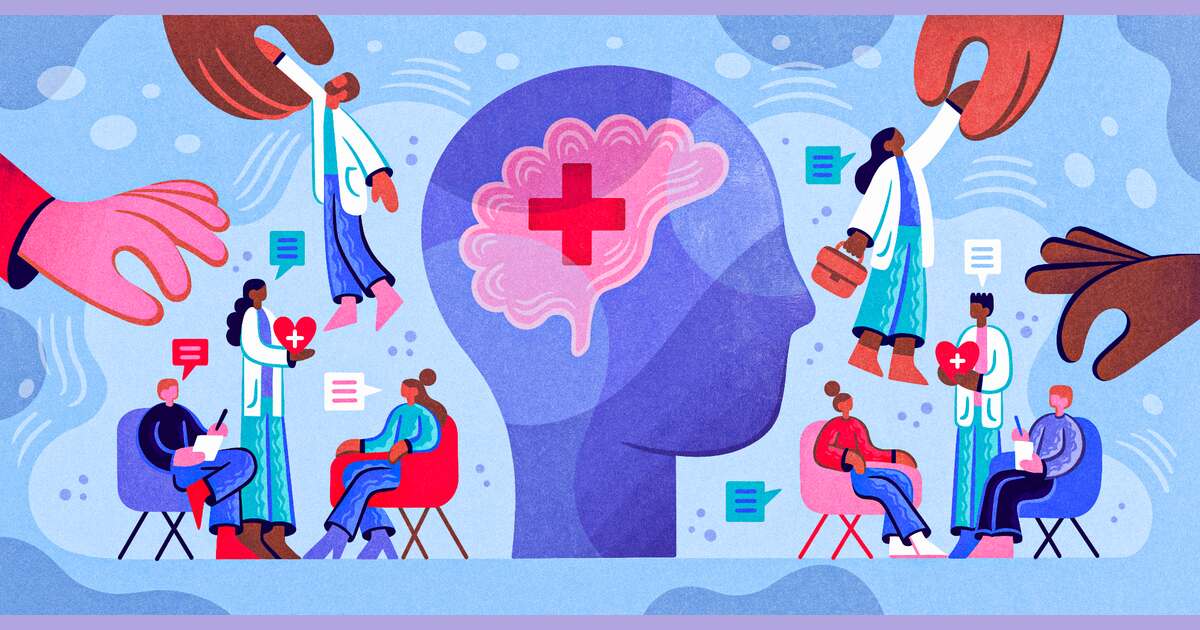Across the United States, Healthcare workers are facing a significant mental health crisis, warns a new report from the US Centers for Disease Control and Prevention (CDC).
The report, based on nationwide survey data collected between 2018 and 2022, reveals troubling trends among healthcare professionals. In 2022, nearly half of these workers reported feeling burned out, a significant increase from just under a third four years earlier. Additionally, reports of workplace harassment more than doubled during the same period.
Healthcare Workers Face Mental Health Crisis, Says CDC
This alarming situation extends beyond the healthcare sector, as the report highlights that healthcare workers are experiencing worse mental health outcomes compared to employees in other industries.
The study’s findings arrive on the heels of the largest healthcare worker strike in the history of the United States. Around 75,000 unionized employees of Kaiser Permanente went on strike in five states and the District of Columbia, citing burnout and chronic staffing shortages as primary reasons for their protest.
Dr. Debra Houry, the CDC’s chief medical officer, emphasizes that the demanding nature of healthcare work has been a long-standing issue. Healthcare providers often contend with long hours, unpredictable schedules, exposure to infectious diseases, and emotionally challenging interactions with patients and their families.
Previous research has even revealed that healthcare workers, particularly nurses, health support staff, and health technicians, face a higher risk of suicide compared to individuals in non-medical fields.
The COVID-19 pandemic exacerbated these workplace challenges. Healthcare providers grappled with a surge in patients, extended work hours, and shortages of essential supplies.
These stresses contributed to increased mental health complications, including suicidal thoughts and, much like a significant portion of the US adult population, substance abuse challenges.
The study’s findings indicate that healthcare workers reported a rise in poor mental health days between 2018 and 2022. A notable 44% expressed a desire to seek new employment, up from 33% in 2018. In contrast, other essential workers demonstrated a decline in their intention to change jobs during the same period.
One particularly troubling revelation in the report is the surge in harassment experienced by healthcare workers, including violent threats, bullying, and verbal abuse from patients and coworkers. Harassment had a profound impact on the mental health of healthcare workers. Those who reported harassment were five times more likely to experience anxiety compared to their counterparts. Furthermore, they were over three times as likely to report depression and almost six times as likely to report burnout.
The report emphasizes that these negative consequences are preventable with improved workplace policies and practices. Trust in management, sufficient time for work completion, and support from supervisors were identified as factors that could help reduce burnout among healthcare workers.
The report also recommends employers to encourage cross-level employee participation in decision-making. Healthcare workers who participated in decision-making processes were approximately half as likely to report symptoms of depression. Supervisors should also actively monitor staffing needs and address harassment reports seriously to provide better support to their employees.
The CDC’s National Institute for Occupational Safety and Health is planning to launch a national campaign in the fall aimed at helping hospital leaders address the well-being challenges faced by healthcare workers. This initiative is part of the agency’s ongoing efforts to raise awareness about the mental health challenges of healthcare workers.
In summary, the report underscores the urgent need to address the mental health crisis among healthcare workers, and it calls for swift actions from employers and policymakers to ensure the well-being of these essential professionals.








Leave a Reply
You must be logged in to post a comment.